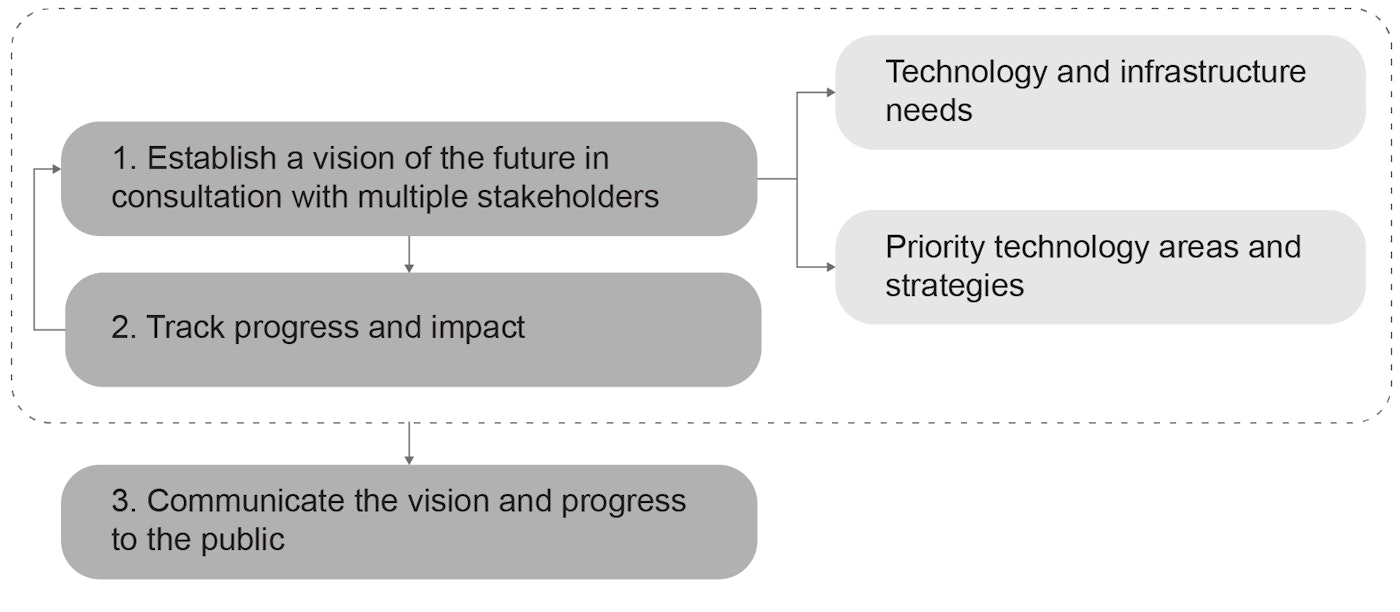Cite report
IEA (2020), Energy Technology Perspectives 2020, IEA, Paris https://www.iea.org/reports/energy-technology-perspectives-2020, Licence: CC BY 4.0
Report options
Making the transition to clean energy
Highlights
More than 125 governments have formally discussed net-zero emissions targets, and over a dozen of countries and the European Union, accounting for around 10% of global energy-related CO2 emissions, have formulated these ambitions in law or proposed legislation. Many companies have also announced carbon-neutral targets. Achieving net-zero emissions depends critically on accelerating clean energy technology development and deployment.
Making a path to net-zero emissions requires governments to establish a long-term vision for their energy sector to guide future expectations and build investor confidence, and to support the strategy by tracking progress, re-prioritising as necessary, and communicating expectations and progress effectively.
Governing process for a strategy towards net-zero emissions
Open
Making a path to net-zero emissions requires governments to establish a long-term vision for their energy sector to guide future expectations and build investor confidence, and to support the strategy by tracking progress, re-prioritising as necessary, and communicating expectations and progress effectively.
Long-term visions need to be supported by clean energy transition strategies and actions tailored to local infrastructure and technology needs. Effective policy toolkits must be built around five core areas:
- Tackle emissions from existing assets. Much of the existing capital stock will remain in operation decades into the future, but there is scope to retire some assets early or re-purpose them, taking advantage of investment cycle timetables.
Global CO2 emissions locked in by existing energy-related assets by sector measured against the CO2 emissions trajectory of the Sustainable Development Scenario, 2019-2070
Open- Strengthen markets for technologies at an early stage of adoption. It is for governments to set the framework for markets; they can maximise the contribution from private capital with appropriate instruments and incentives.
- Develop and upgrade infrastructure that enables technology deployment. Careful strategic planning is necessary to avoid bottlenecks in the deployment of clean energy technologies.
Global cumulative investment in electricity infrastructure in the Sustainable Development Scenario, 2019-2070
Open- Boost support for research, development and demonstration. Achieving net-zero emissions requires rapid progress in developing new early stage technologies. Options range from increased public R&D funding to support for large-scale demonstrators.
- Expand international technology collaboration. The scale and urgency of the challenges mean that there is a strong case for international co-operation which can make use of existing multilateral forums.
Economic stimulus measures and recovery plans in response to the Covid‑19 pandemic offer an opportunity to take action that would boost the economy while supporting clean energy and climate goals, including action in these five areas.